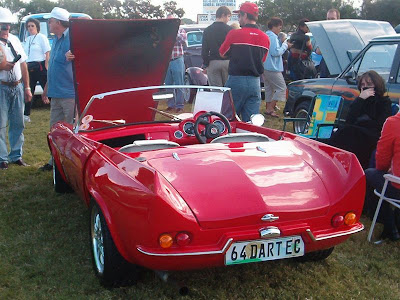










The Barnard is powered by a twin-turbo Porsche V8 engine with a power rating of 617bhp (460kW). It should deliver a sub-4 second 0 - 60mph time and a theoretical top speed of over 240mph (386km/h). Only the driver really holds those horses back because the Barnard is missing some equipment namely power steering, ABS brakes and traction control. Even the windows require manual manpower to operate. It's a contrast to the cockpit which is inspired by one of Barnard's other interests, aviation.
Built on a monocoque chassis that's made from lightweight hi-tech steels like Domex and Docol, the car is more race road car than anything else. It's designed to accommodate buyers' interests and can be personalised to a great extent, depending on budgets offered. The engine itself can be uprated to suit the buyer's desires.
"This is a car which has been built with the objective of breaking barriers, and no expense has been spared to make it into what I believe is the most single-minded performance machine yet from South Africa," Barnard said.
To help keep it on the road are things like a rear diffuser, a flat undertray and cutouts on the front wheel arches that generate larges doses of downforce.
Customer deliveries of the Barnard will begin in the middle of the year at a cost of about R1.1 million (about US$110,000) a pop.






The Laraki Borac
(Morocco)Manufactured by the Laraki group.
It was originally unveiled as a concept at the 2005 Geneva Motor Show. The car is planned for production, although a final design has yet to be unveiled.
The design of the Borac is that of a GT, with a front engine layout and seats 4 passengers. The 2 rear seats are small, probably for children instead of adults. The Borac is a totally independant design from the companies first model the Fulgura.
A Mercesdes 6.0L V12 powers the Borac, with a impressive 0 - 60mph in 4.5 seconds.


















